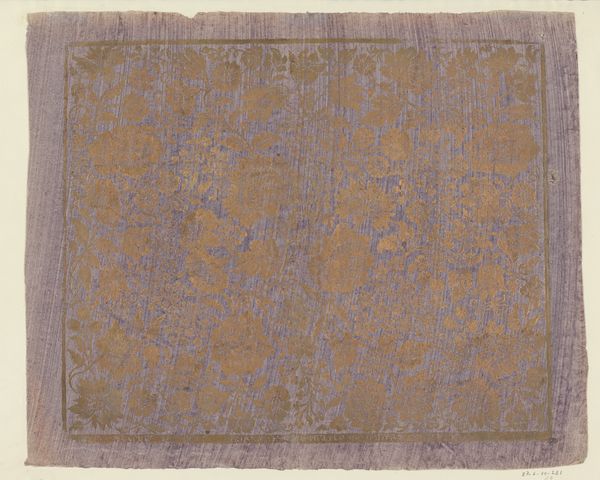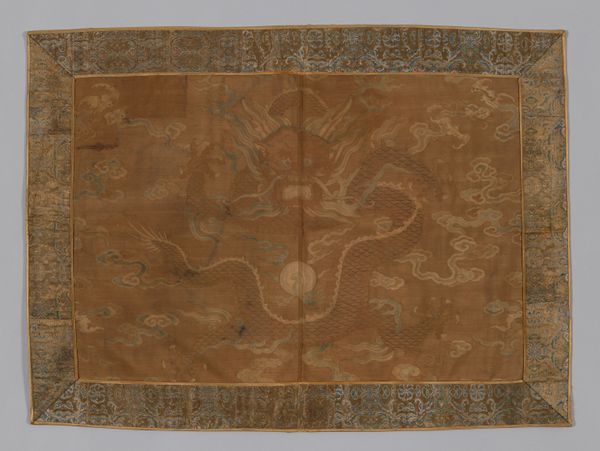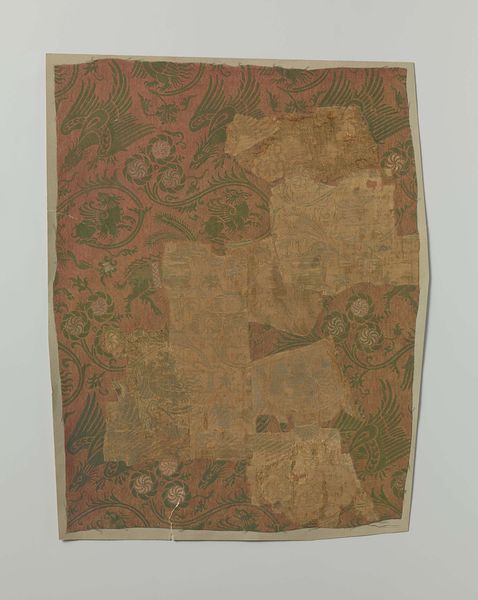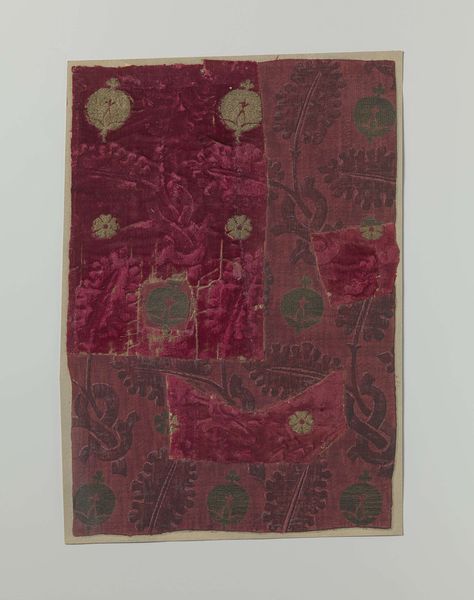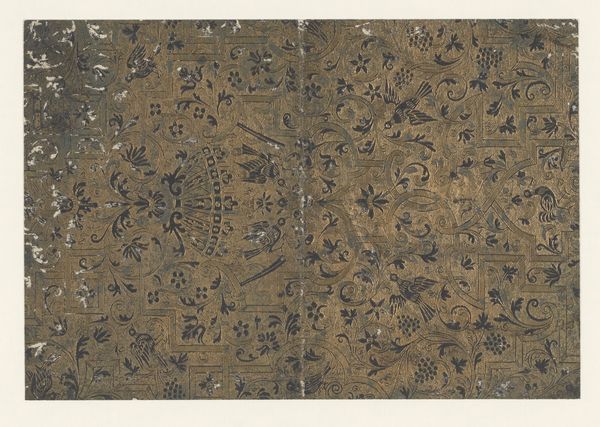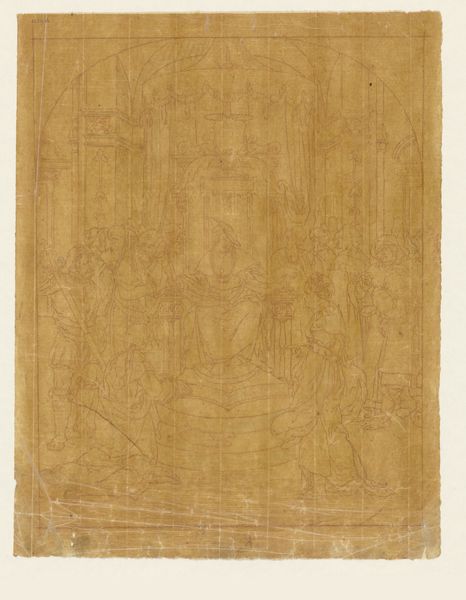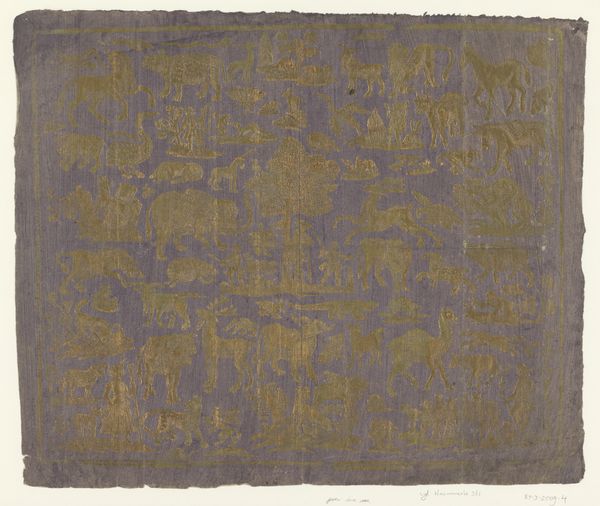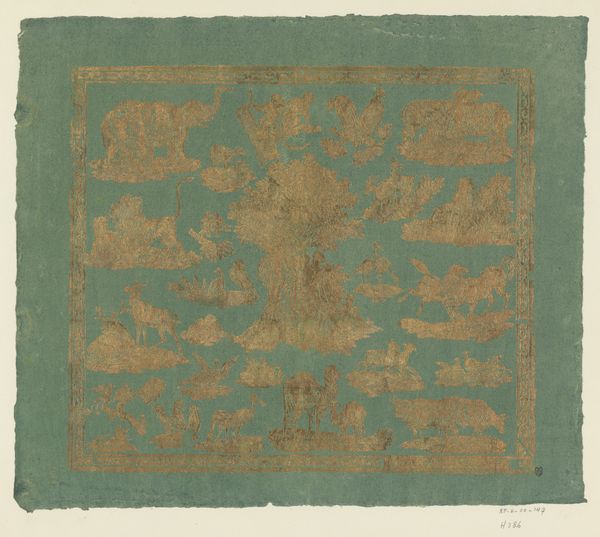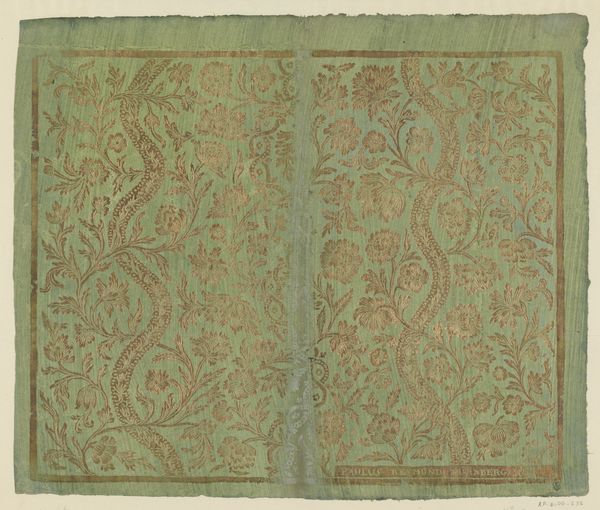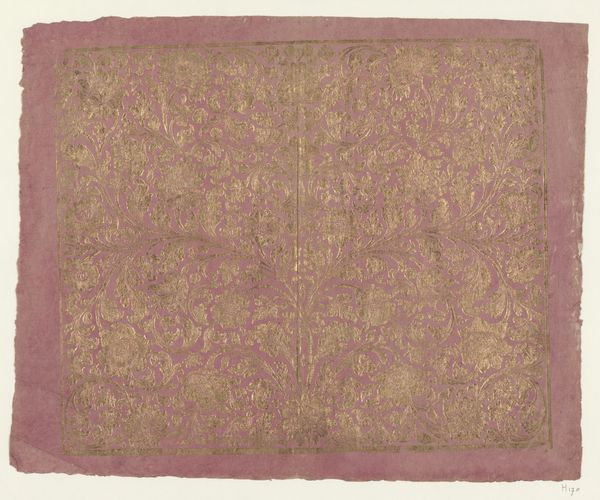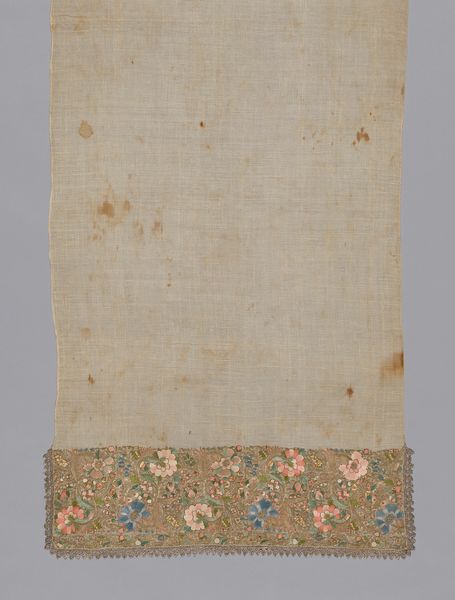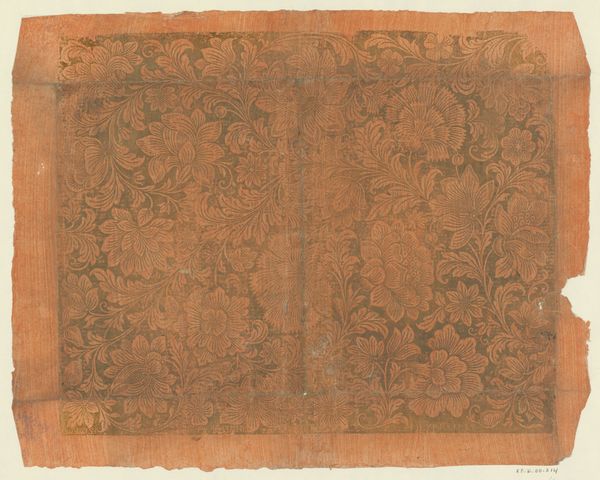
Fragment Supplemented with Drawing 14th century and 19th century
0:00
0:00
drawing, mixed-media, weaving, textile, watercolor
#
drawing
#
mixed-media
#
medieval
#
water colours
#
weaving
#
textile
#
watercolor
#
watercolor
Dimensions: 47.9 × 37.8 cm (18 7/8 × 14 7/8 in.)
Copyright: Public Domain
Curator: Before us, we have “Fragment Supplemented with Drawing.” This mixed-media piece incorporates weaving, textile, drawing and watercolors. Interestingly, it represents an artistic dialogue spanning several centuries—the 14th and the 19th. Editor: It gives an impression of age, a fragment recovered or excavated, yet augmented with a more recent hand. The textures are fascinating, an obvious contrast. There's a melancholic but compelling sense of palimpsest. Curator: Yes, the contrast between the woven fragment and the overlaid drawing is key. Consider how the dense patterns of the medieval textile—replete with floral and animal motifs—interact with the looser, more representational quality of the later additions. Editor: The composition forces a certain kind of reckoning, doesn't it? A re-evaluation. Textiles throughout the Medieval era signified more than just simple craft. The depicted eagles and foliage can be indicative of nobility, status, or connection to the Divine. Do you think its original purpose still resonates despite the modern overlay? Curator: Potentially. The watercolor supplements act like a kind of reinterpretation, not necessarily contradicting but perhaps reframing or clarifying those earlier symbolic forms for a contemporary viewer. We see the earlier representation filtered through a nineteenth-century lens, the later artist imposing a subjective impression onto the earlier textile’s formal structure. Editor: This brings up compelling questions of preservation versus interpretation. To what extent can or should later interventions be integrated, considering questions around agency and control. Did Schultze enhance the weaving by drawing attention to the texture and the faded elements, or did he undermine the artistic intent through supplementing it? Curator: One could argue the artistic intention shifted and that what we are witnessing here is not just one artwork but a collaboration—admittedly across centuries—where formal elements like line, color, and texture coalesce into something entirely novel and evocative. Editor: A silent, slow, aesthetic negotiation, perhaps? That makes it all the more beautiful. Considering our fraught present with preservation, sustainability and accessibility in museums, this unusual collaboration should remind us how much value there is in adaptive and multifaceted approaches in cultural institutions.
Comments
No comments
Be the first to comment and join the conversation on the ultimate creative platform.
